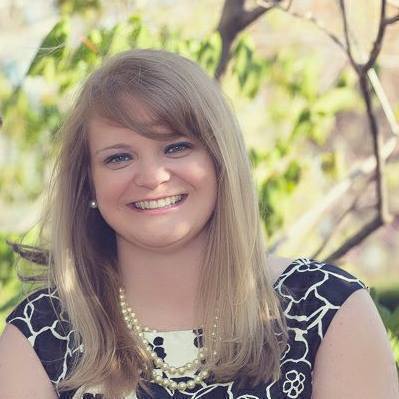Acknowledgments
Comments
-
Our organization, too, prints each thank-you and our CEO signs them by hand. This allows us to add personal notes to letters for major donors, alumni, and those with close ties to our organization. The personal relationship we maintain seems to make the effort worth it. However, I could see how an organization could get swamped if the number of thank-you letters became too much for the CEO to handle.
I have heard of different techniques. Some nonprofits I have donated to, only send email thank you's. Others have sent postcards, though this seems very impersonal. I have read of using a tier system, where a digital signature is used for small donations, a
Director signs mid-level donations, and the CEO only signs for large donations. Supposedly this system "rewards" the donor for upgrading his donation level.
Am curious what other people have to suggest.1 -
At my current org, our CEO signs 98% of our ack letters...but we rarely meet the 48-hour industry standard turnaround time. At my previous org, we had a tiered system where the CEO would sign some (if he was in town/available), the VP of External Affairs would sign some, and the Development Director would sign the remainder. It was done based on size of gift as well as other factors...mostly that gift entry staff, which was me and one other who sat next to me, knew to set because we were familiar with the names.
I think the effort and expense in sending ack letters, especially hand-signed, is well worth it. If I make a small donation to your org and get a hand-signed letter from anyone (staff, board, volunteer), and moreso if there's also a handwritten note (even just "thanks!"), I'm more likely to give again, probably with a modest increase. It's that personal touch and feeling of appreciation. To me, it's better to have a hand-signed letter from a data entry staff member rather than an electronic/digital signature from the CEO...but maybe that's just me.
If the issue is more timing, then I would suggest that you build that personal touch into a stewardship process. Do a more generic ack letter or email, but follow that up with a handwritten note (maybe written by a board member, other volunteer, person who has benefited from your org, or even someone on your data entry staff...it doesn't always matter who) about 2-3 months later. Maybe with a mention of a program that my donation may have helped to support (key word "may"). Personally, I respond better to brief notes with accompanying literature over a lengthy, text-heavy letter...and personalized (salutation and anything else you can easily work into a mailmerge from what data is in your system) is even better...really expected, at this point. These can then be done in batches, and don't need to (necessarily) reference the gift other than, "thank you for your support" or "thank you for your recent gift".
I would first recommend splitting things up so that the CEO doesn't sign every single one. I'm going to be advocating for that here because we have a new Development Director starting soon, and I see this as a great opportunity for her to introduce herself to our donors.
3 -
F Murray:
Our organization, too, prints each thank-you and our CEO signs them by hand. This allows us to add personal notes to letters for major donors, alumni, and those with close ties to our organization. The personal relationship we maintain seems to make the effort worth it. However, I could see how an organization could get swamped if the number of thank-you letters became too much for the CEO to handle.
I have heard of different techniques. Some nonprofits I have donated to, only send email thank you's. Others have sent postcards, though this seems very impersonal. I have read of using a tier system, where a digital signature is used for small donations, a
Director signs mid-level donations, and the CEO only signs for large donations. Supposedly this system "rewards" the donor for upgrading his donation level.
Am curious what other people have to suggest.I believe our process is that gifts under a certain level get the tax letter/acknowledgement with an electronic signature. In addition, the gift officers are encouraged to write a personal notecard to be mailed seperately. Our theory was that the letter is really a tax receipt (with nice language). Having gift officers or others personalize those just took too much time and created too much additional work (as you've discovered) for those generating the letters. So, the follow-up notecard is the gift officer's chance to send a more meaningful note.
Of course, gifts over a certain level get an old fashioned "real" signature on the letter. And for gifts over that level, the letter is tweaked further.
Shani
0 -
shani traum:
F Murray:
Our organization, too, prints each thank-you and our CEO signs them by hand. This allows us to add personal notes to letters for major donors, alumni, and those with close ties to our organization. The personal relationship we maintain seems to make the effort worth it. However, I could see how an organization could get swamped if the number of thank-you letters became too much for the CEO to handle.
I have heard of different techniques. Some nonprofits I have donated to, only send email thank you's. Others have sent postcards, though this seems very impersonal. I have read of using a tier system, where a digital signature is used for small donations, a
Director signs mid-level donations, and the CEO only signs for large donations. Supposedly this system "rewards" the donor for upgrading his donation level.
Am curious what other people have to suggest.I believe our process is that gifts under a certain level get the tax letter/acknowledgement with an electronic signature. In addition, the gift officers are encouraged to write a personal notecard to be mailed seperately. Our theory was that the letter is really a tax receipt (with nice language). Having gift officers or others personalize those just took too much time and created too much additional work (as you've discovered) for those generating the letters. So, the follow-up notecard is the gift officer's chance to send a more meaningful note.
Of course, gifts over a certain level get an old fashioned "real" signature on the letter. And for gifts over that level, the letter is tweaked further.
Shani
In addition to what has been said here about the layering of signatures, inserted vs. live signature, depending on the size of gift and some other criteria, and additional individual/personal notes to the big gifts, another layer often added on is a personal phone call from someone in leadership/executive to those folks.
I agree, the expense isn't so much the issue, it's part of doing business. Stewardship is a very important part of the fundraising process. The challenge has always been the timing and trying to keep at or below industry standard for acknowledge turn around time.
0 -
On our response devices, we have started including the option (check box) to receive an acknowledgement by email. I set up an "email template" just like regular letters in Config and Mail. When the merge is done, I copy and paste into an email and push send. The email has an electronic signature and all the appropriate tax language. We save on paper, postage and lag time if the appropriate signer is not available. Plus, we are collecting new/updated email addresses for our constituents - win, win! We are also in the process of designing new online giving forms that would generate a nice letter immediately.
1 -
For many years our CEO signed every single letter that went to every single person, no matter the size of the donation. Over time, it got to be an issue as our donor pool got larger. Anyone who donates online gets an automatic ack letter email. Anyone over $25 domestically or over $100 internationally receives a paper letter. We just started enacting e-signatures on letters to people who have given $100 or less (which I personally don't like). Our newly instituted dev team is really pushing to have other members of staff sign, so there's always a live signature. I think it makes a big difference.1
-
Any of our gifts that come in online get a e-letter. Mailed gifts get a physical letter, always with a 'real' signature. We do ask all donors in the initial letter if they prefer to receive future letters by email - if they say yes, then they will be moved into the e-letter list.
For us, we found $250 to be our sweet spot. Over $250 is signed by either our Director, or the senior staff member directly involved in the area to which they are giving. (Animal Care or Conservation Science, etc) Everything under $250 is signed by a member of the development team, usually me. We don't get a fast turn-around time (takes 5-10 days due to our receipting process) but we decided that we preferred a personalized letter than takes longer over a fast one that was less personalized. To make up for the time gap, we do a phone 'thanks' for those over $250 donors which works out really well.
3
Categories
- All Categories
- Shannon parent
- shannon 2
- shannon 1
- 21 Advocacy DC Users Group
- 14 BBCRM PAG Discussions
- 89 High Education Program Advisory Group (HE PAG)
- 28 Luminate CRM DC Users Group
- 8 DC Luminate CRM Users Group
- Luminate PAG
- 5.9K Blackbaud Altru®
- 58 Blackbaud Award Management™ and Blackbaud Stewardship Management™
- 409 bbcon®
- 2.1K Blackbaud CRM™ and Blackbaud Internet Solutions™
- donorCentrics®
- 1.1K Blackbaud eTapestry®
- 2.8K Blackbaud Financial Edge NXT®
- 1.1K Blackbaud Grantmaking™
- 527 Education Management Solutions for Higher Education
- 1 JustGiving® from Blackbaud®
- 4.6K Education Management Solutions for K-12 Schools
- Blackbaud Luminate Online & Blackbaud TeamRaiser
- 16.4K Blackbaud Raiser's Edge NXT®
- 4.1K SKY Developer
- 547 ResearchPoint™
- 151 Blackbaud Tuition Management™
- 1 YourCause® from Blackbaud®
- 61 everydayhero
- 3 Campaign Ideas
- 58 General Discussion
- 115 Blackbaud ID
- 87 K-12 Blackbaud ID
- 6 Admin Console
- 949 Organizational Best Practices
- 353 The Tap (Just for Fun)
- 235 Blackbaud Community Feedback Forum
- 55 Admissions Event Management EAP
- 18 MobilePay Terminal + BBID Canada EAP
- 36 EAP for New Email Campaigns Experience in Blackbaud Luminate Online®
- 109 EAP for 360 Student Profile in Blackbaud Student Information System
- 41 EAP for Assessment Builder in Blackbaud Learning Management System™
- 9 Technical Preview for SKY API for Blackbaud CRM™ and Blackbaud Altru®
- 55 Community Advisory Group
- 46 Blackbaud Community Ideas
- 26 Blackbaud Community Challenges
- 7 Security Testing Forum
- 1.1K ARCHIVED FORUMS | Inactive and/or Completed EAPs
- 3 Blackbaud Staff Discussions
- 7.7K ARCHIVED FORUM CATEGORY [ID 304]
- 1 Blackbaud Partners Discussions
- 1 Blackbaud Giving Search™
- 35 EAP Student Assignment Details and Assignment Center
- 39 EAP Core - Roles and Tasks
- 59 Blackbaud Community All-Stars Discussions
- 20 Blackbaud Raiser's Edge NXT® Online Giving EAP
- Diocesan Blackbaud Raiser’s Edge NXT® User’s Group
- 2 Blackbaud Consultant’s Community
- 43 End of Term Grade Entry EAP
- 92 EAP for Query in Blackbaud Raiser's Edge NXT®
- 38 Standard Reports for Blackbaud Raiser's Edge NXT® EAP
- 12 Payments Assistant for Blackbaud Financial Edge NXT® EAP
- 6 Ask an All Star (Austen Brown)
- 8 Ask an All-Star Alex Wong (Blackbaud Raiser's Edge NXT®)
- 1 Ask an All-Star Alex Wong (Blackbaud Financial Edge NXT®)
- 6 Ask an All-Star (Christine Robertson)
- 21 Ask an Expert (Anthony Gallo)
- Blackbaud Francophone Group
- 22 Ask an Expert (David Springer)
- 4 Raiser's Edge NXT PowerUp Challenge #1 (Query)
- 6 Ask an All-Star Sunshine Reinken Watson and Carlene Johnson
- 4 Raiser's Edge NXT PowerUp Challenge: Events
- 14 Ask an All-Star (Elizabeth Johnson)
- 7 Ask an Expert (Stephen Churchill)
- 2025 ARCHIVED FORUM POSTS
- 322 ARCHIVED | Financial Edge® Tips and Tricks
- 164 ARCHIVED | Raiser's Edge® Blog
- 300 ARCHIVED | Raiser's Edge® Blog
- 441 ARCHIVED | Blackbaud Altru® Tips and Tricks
- 66 ARCHIVED | Blackbaud NetCommunity™ Blog
- 211 ARCHIVED | Blackbaud Target Analytics® Tips and Tricks
- 47 Blackbaud CRM Higher Ed Product Advisory Group (HE PAG)
- Luminate CRM DC Users Group
- 225 ARCHIVED | Blackbaud eTapestry® Tips and Tricks
- 1 Blackbaud eTapestry® Know How Blog
- 19 Blackbaud CRM Product Advisory Group (BBCRM PAG)
- 1 Blackbaud K-12 Education Solutions™ Blog
- 280 ARCHIVED | Mixed Community Announcements
- 3 ARCHIVED | Blackbaud Corporations™ & Blackbaud Foundations™ Hosting Status
- 1 npEngage
- 24 ARCHIVED | K-12 Announcements
- 15 ARCHIVED | FIMS Host*Net Hosting Status
- 23 ARCHIVED | Blackbaud Outcomes & Online Applications (IGAM) Hosting Status
- 22 ARCHIVED | Blackbaud DonorCentral Hosting Status
- 14 ARCHIVED | Blackbaud Grantmaking™ UK Hosting Status
- 117 ARCHIVED | Blackbaud CRM™ and Blackbaud Internet Solutions™ Announcements
- 50 Blackbaud NetCommunity™ Blog
- 169 ARCHIVED | Blackbaud Grantmaking™ Tips and Tricks
- Advocacy DC Users Group
- 718 Community News
- Blackbaud Altru® Hosting Status
- 104 ARCHIVED | Member Spotlight
- 145 ARCHIVED | Hosting Blog
- 149 JustGiving® from Blackbaud® Blog
- 97 ARCHIVED | bbcon® Blogs
- 19 ARCHIVED | Blackbaud Luminate CRM™ Announcements
- 161 Luminate Advocacy News
- 187 Organizational Best Practices Blog
- 67 everydayhero Blog
- 52 Blackbaud SKY® Reporting Announcements
- 17 ARCHIVED | Blackbaud SKY® Reporting for K-12 Announcements
- 3 Luminate Online Product Advisory Group (LO PAG)
- 81 ARCHIVED | JustGiving® from Blackbaud® Tips and Tricks
- 1 ARCHIVED | K-12 Conference Blog
- Blackbaud Church Management™ Announcements
- ARCHIVED | Blackbaud Award Management™ and Blackbaud Stewardship Management™ Announcements
- 1 Blackbaud Peer-to-Peer Fundraising™, Powered by JustGiving® Blogs
- 39 Tips, Tricks, and Timesavers!
- 56 Blackbaud Church Management™ Resources
- 154 Blackbaud Church Management™ Announcements
- 1 ARCHIVED | Blackbaud Church Management™ Tips and Tricks
- 11 ARCHIVED | Blackbaud Higher Education Solutions™ Announcements
- 7 ARCHIVED | Blackbaud Guided Fundraising™ Blog
- 2 Blackbaud Fundraiser Performance Management™ Blog
- 9 Foundations Events and Content
- 14 ARCHIVED | Blog Posts
- 2 ARCHIVED | Blackbaud FIMS™ Announcement and Tips
- 59 Blackbaud Partner Announcements
- 10 ARCHIVED | Blackbaud Impact Edge™ EAP Blogs
- 1 Community Help Blogs
- Diocesan Blackbaud Raiser’s Edge NXT® Users' Group
- Blackbaud Consultant’s Community
- Blackbaud Francophone Group
- 1 BLOG ARCHIVE CATEGORY
- Blackbaud Community™ Discussions
- 8.3K Blackbaud Luminate Online® & Blackbaud TeamRaiser® Discussions
- 5.7K Jobs Board













